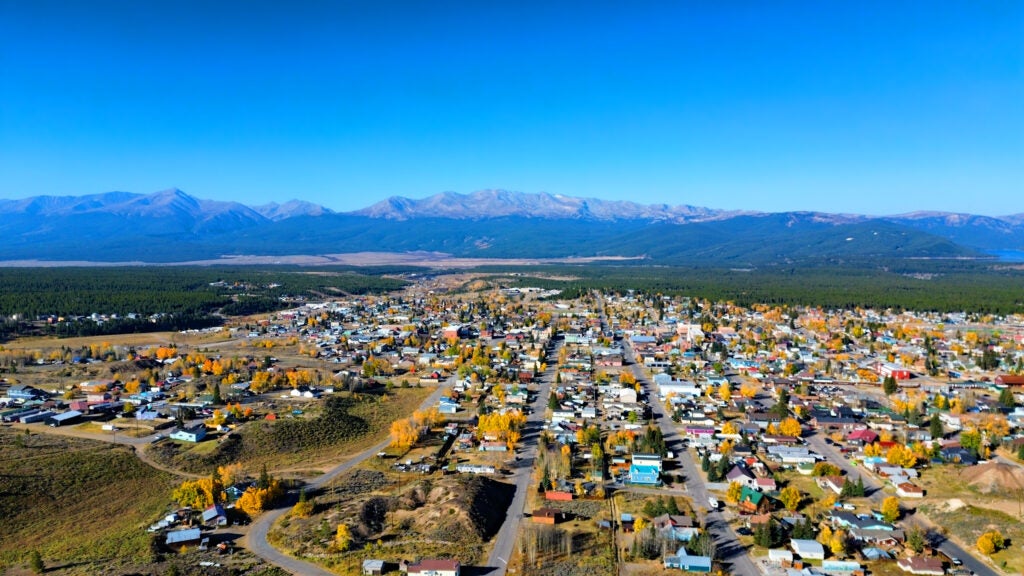No products in the cart.
Outdoor Adventure
Our Adventure Guide to Colorado’s Highest City
Most of Colorado’s 1800s boomtowns lived fast and died young. Leadville is an exception, evolving from being one of the wildest Wild West outposts to the heart of Colorado’s high-altitude outdoor adventures.
Colorado’s two highest mountains, the 14,440-foot Mount Elbert and 14,429-foot Mount Massive, dominate the horizon west of Leadville. For good measure, the state’s third-highest mountain, Mount Harvard at 14,423-foot, is about an hour’s drive from town. The trio represents the three highest peaks in the whole of the Rocky Mountains. Aside from its situation amidst such resources, the town of Leadville since 1983 and 1994 has hosted major hundred-mile running and mountain-biking races, respectively. What keeps Leadville relevant and thriving today is outdoor recreation.
Leadville materialized in 1860 with the discovery of placer gold (gold extracted from eroded rock), and the mining boom was on. Gold and zinc deposits eventually took a back seat to Leadville’s dominant metal: silver. There are rumors of misdirection behind the misleading name, but the “lead” in Leadville wasn’t entirely disingenuous. Lead ore was indeed mined in the area, but it was the silver-bearing lead-ore blend called cerussite that gave the town its official title.
“Leadville” was bestowed by Horace Tabor, a developer known variously as the Bonanza King and the Silver King, in 1878 after trying out names such as California Gulch, Boughton, Slabtown, and my favorite, Cloud City.
1893 – The Year the Silver Barons Went Bust
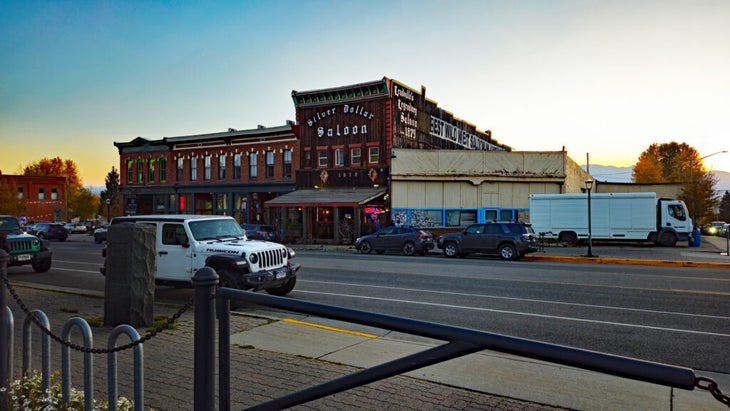
In 1880 Leadville reached a peak population of 14,820, recorded in the city’s first official census. An explosion of wealth brought along with it a desire for refined culture in a rough place. Horace Tabor fast-tracked the Tabor Opera House in 1879. Opening in the same year was the elegant Interlaken Hotel, on the shores of Twin Lakes, a gorgeous but ultimately doomed retreat for well-off visitors.
The luxury starkly contrasted with the abysmal conditions in the perilously unsafe mines. An estimated 3,000 to 5,000 miners died from 1860 to 1899 in cave-ins, explosions, and equipment accidents. A lack of safety standards (and reports on mine accidents) makes it difficult to pinpoint the number of fatalities.
The Panic of 1893 and President Grover Cleveland’s initiative to repeal the Sherman Silver Purchase Act, however, jointly tanked Leadville’s fortunes. The Sherman Silver Act had required the government to purchase a monthly allotment of 4.5 million ounces (roughly 280,000 pounds) of silver. Its revocation was the beginning of the end for Leadville’s mining prosperity—but not for the city itself.
Visiting America’s Highest City
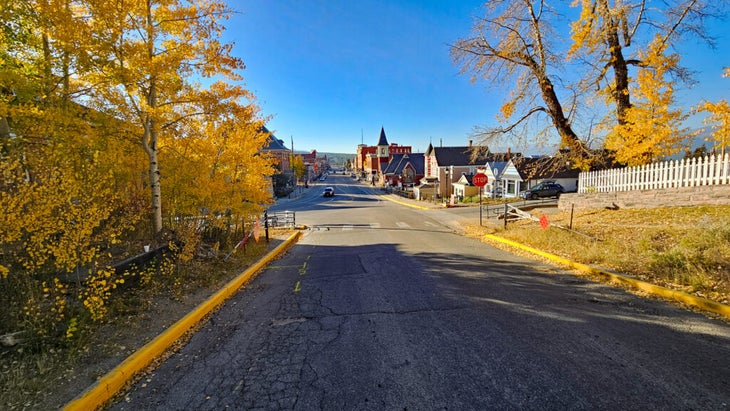
Leadville is America’s highest incorporated city. At 10,152 feet, it is a mere 408 feet away from being twice as high as Denver (5,280 feet). The city’s history is rich and well worth exploring. Strategic visitors can benefit from a day or two in (and below) town while acclimating to the thin air. Moving up gradually is a solid plan for both local Coloradans and out-of-state guests who aspire to hike the high peaks.
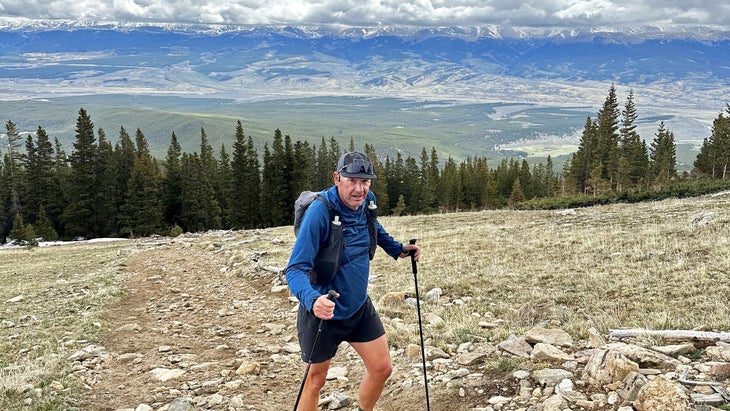
Mountain hiking in the Leadville region is world-class. Seven peaks over 14,000 feet lie within an hour’s drive of Leadville, and all of them can be hiked on established trails without use of ropes or technical climbing equipment. The two highest Colorado peaks, Elbert and Massive, have trailheads less than a half mile apart.
Dozens of excellent 13,000-foot peaks explore the nearby backcountry. Ski Cooper, 11 miles from Leadville, may be moderate in terrain but captures a family-friendly, authentic aesthetic lacking in Colorado’s mega-resort ski towns. The repurposed backcountry cabins of Colorado’s 10th Mountain Division Huts are open to visitors year-round (though winter reservations can be challenging to secure.)

And because people are crazy, Leadville hosts two 100-mile races: the Leadville Trail 100 MTB for bikers and the Leadville Trail 100 Run.
Colorado’s Highest Summits
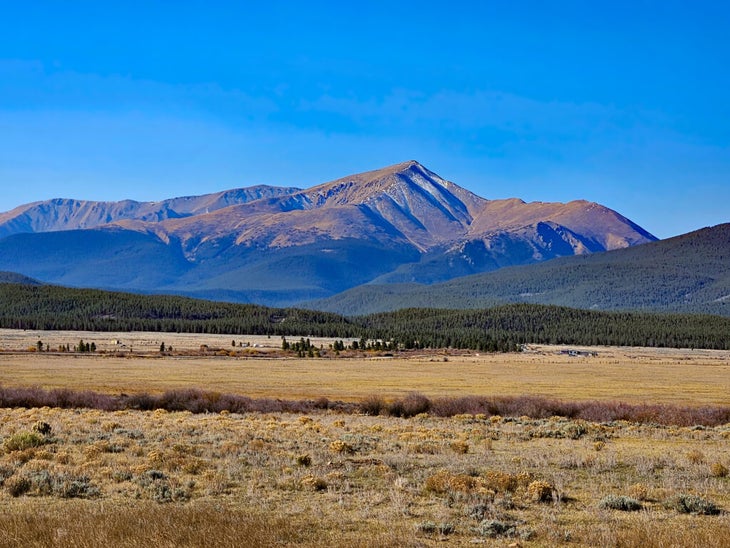
I’ve hiked Mount Elbert 12 times at the time of writing and might have added to that count by the time you’re reading this. Mount Elbert and neighboring Mount Massive have established hiking trails requiring good fitness and altitude acclimation. Still, with proper acclimatization and preparation, they are attainable by “everyman” hikers who want to stand on the highest ground in Colorado.
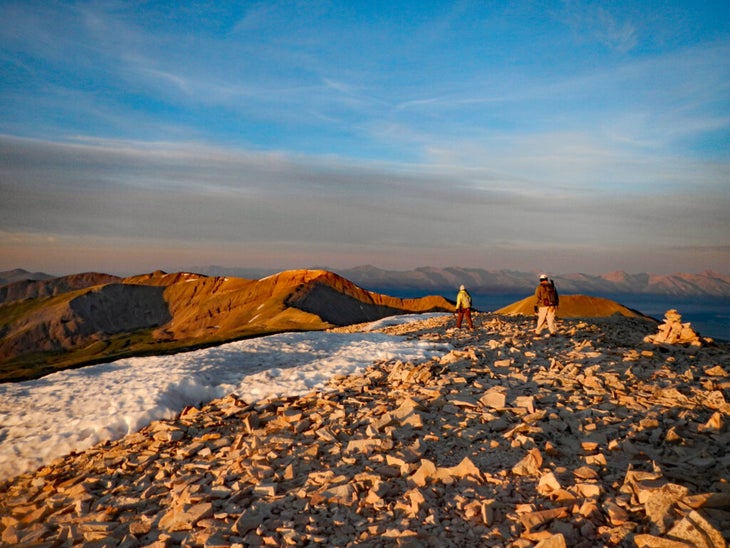
I could write a book about the excellent hiking around Leadville. The 14,197-foot Mount Sherman is a great first 14er, and one route starts from Iowa Gulch on the Leadville side of the mountain. The Mosquito Pass Area has some of my favorite 13ers, including Treasurevault Mountain, Mosquito Peak, and London Mountain. These peaks don’t see the crowds the 14ers do but offer all the same great views and rolling, rounded ridge lines. French Mountain and Oklahoma Mountain are two more remote 13ers I also count among my favorites, offering wilderness solitude with the historical flashes of mining ruins. Oklahoma Mountain was the site of a plane crash in 1954, and some of the wreckage can still be seen on the mountain.
Seeing Leadville Through New Eyes
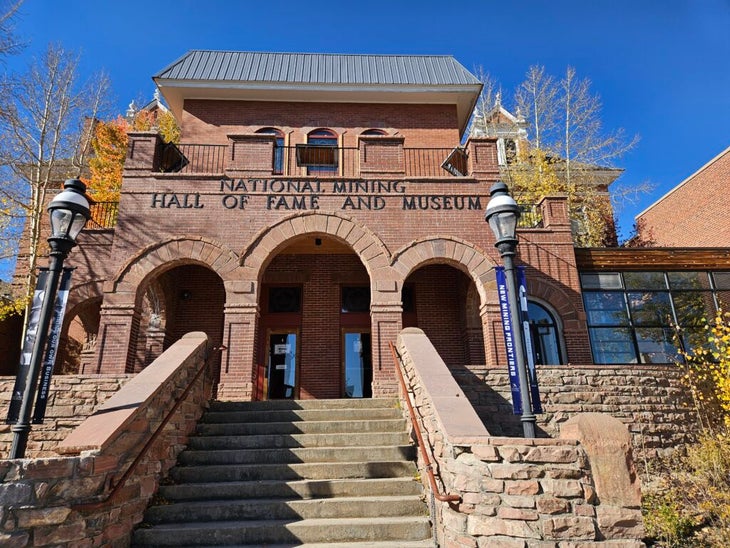
For over 20 years, my visits to Leadville were almost exclusively to climb and hike in the high mountains. On a recent trip, I decided to shift my focus and dive into the city’s brief but ample history. Rather than sleeping in one of my battered tents, I took a more civilized approach and rented an Airbnb right in town. Leadville’s compact layout makes most interesting sites a short walk or bike ride away.
The original visitors to the region were the Indigenous Ute and Arapaho tribes. Both have oral histories of the area going back hundreds of years. This history is told in detail at the Ute Indian Museum in Montrose, Colorado, about a three-hour drive away.
Most of Leadville’s historical displays focus on the mining era from 1860 onward. I started at the National Mining Hall of Fame and Museum and Matchless Mine. Exhibits showcase an unflinching look at the dangerous art of extracting minerals from the earth. My next stop was to a place highlighting the human toll of immigration to a cold and remote place: the Leadville Irish Miners’ Memorial in Evergreen Cemetery, completed in 2023, honors over 1,300 Irish men, women, and children who sought something better in America and are buried in unmarked graves. As the Irish Network Colorado eloquently states, “The Irish occupied the bottom rung of Leadville’s social ladder, worked the mines and smelters, loved, struggled, dreamed, and died young.”
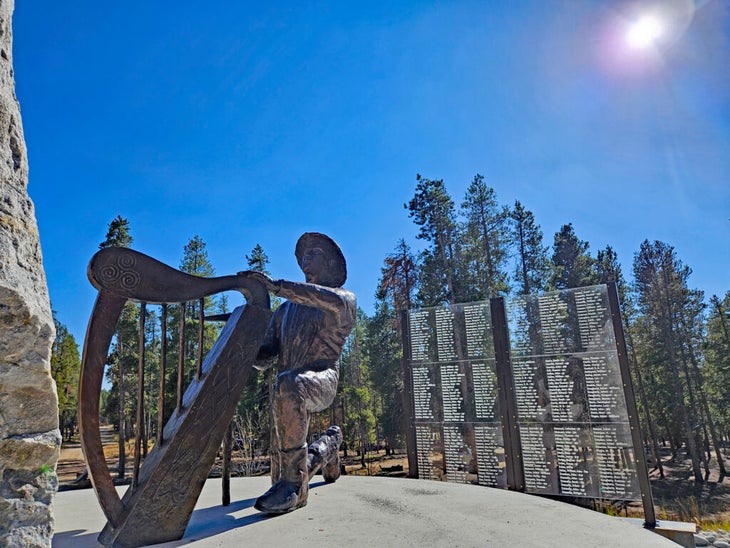
Evergreen Cemetery is set in the peaceful shade of stately ponderosa pines, a mosaic of pine needles and native grasses underfoot. The tasteful memorial features a short labyrinth walkway that ends at the sculpture of a miner holding a pick-axe and a harp, one of Ireland’s national symbols.
Leadville’s mining community was represented by two major groups, including Jewish as well as Irish immigrants. Jewish pioneers’ history here has been preserved at Leadville’s Temple Israel, built in 1884 for a community that then numbered some 400 and contributed to business and municipal life.
The top echelons of Leadville society were those on the winning side of the mining equation. One was August R. Meyer, a mining engineer who built the ornate nine-bedroom Healy House atop a small hill above the city proper. You need to make a reservation to tour the grounds in winter (by phone, 719-486-0487; $10 for adults, free for ages 18 and under), while in summer the place is open Wednesdays through Sundays, 10 A.M to 4 P.M., with walk-in tours. It’s worth a look inside to see what top-of-line comfort looked like in 1878.
Into Leadville’s Wilderness
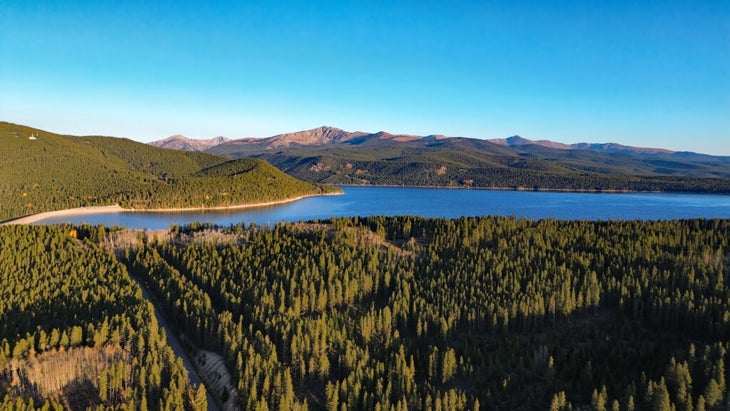
Surrounding Leadville in an 11.6-mile circle is the paved Mineral Belt Trail, accessible to runners, cyclists, and dogs, and wheelchair friendly. In winter, the trail is a popular cross-country ski destination. The pathway weaves through mining ruins on the south side of town, with informational signs at relevant sites. One is the dusty mine where the Guggenheim family made their fortune, prior to founding the sophisticated Guggenheim Museum in New York City.
I wished I had allotted more time to explore the whole trail, but I had a year-old border collie that was itching to explore some of Leadville’s aquatic sights: its brilliant alpine lakes.
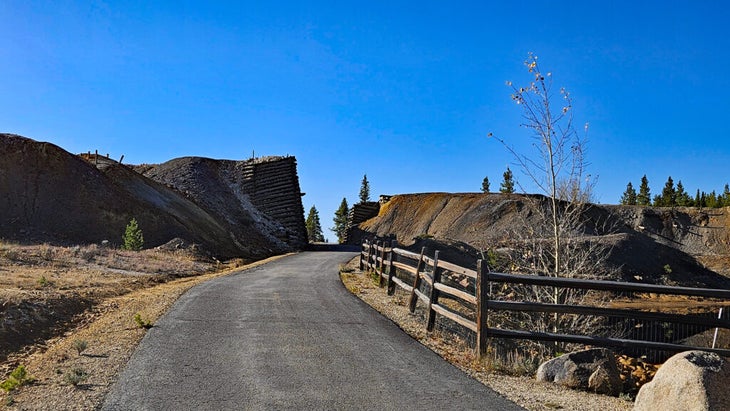
Turquoise Lake is the perfect place for a peaceful lunch break. In the summer, the lake is a popular destination for boating, camping, and fishing. Come autumn, when I visited, it’s a much quieter scene. On this day, it was a detour en route to a hike to the restored site of the Interlaken Resort at Twin Lakes.
Most of my hiking adventures in Leadville are in the high peaks, so it was a nice change of pace to explore a new trail—one that leads to a haunted hotel from the 1800s. At least I assume it’s haunted.
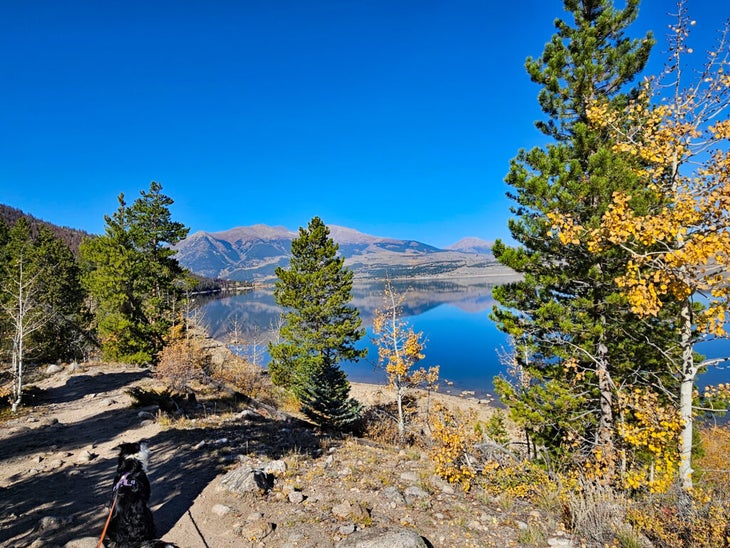
The trail to the resort site is along a mostly flat shelf that borders the southern shore of Twin Lakes, 22 miles from town. About five miles roundtrip, with a total elevation gain of about 335 feet, the outing would be great for a family. You can even mountain bike the trail if you’re in a hurry to see the hotel.
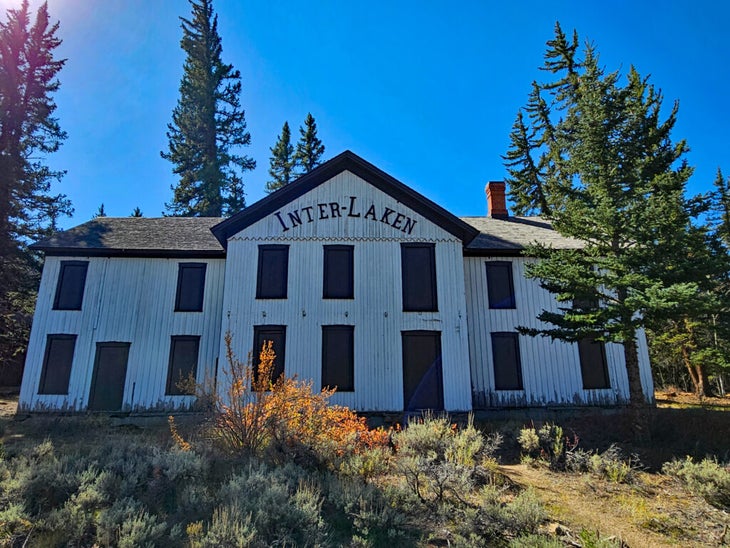
While the main hotel is closed, the long-ago millionaire owner James V. Dexter’s private cabin, built in 1895, is open to the public. Dexter bought the resort in 1883 and supported it as a luxury draw for 13 years, until Twin Lakes were dammed, a mere year after the cabin’s construction. The shoreline became shallow and stagnant, and fears of malaria and other diseases were the death knell of the once-popular resort. It was abandoned in the early 1900s.
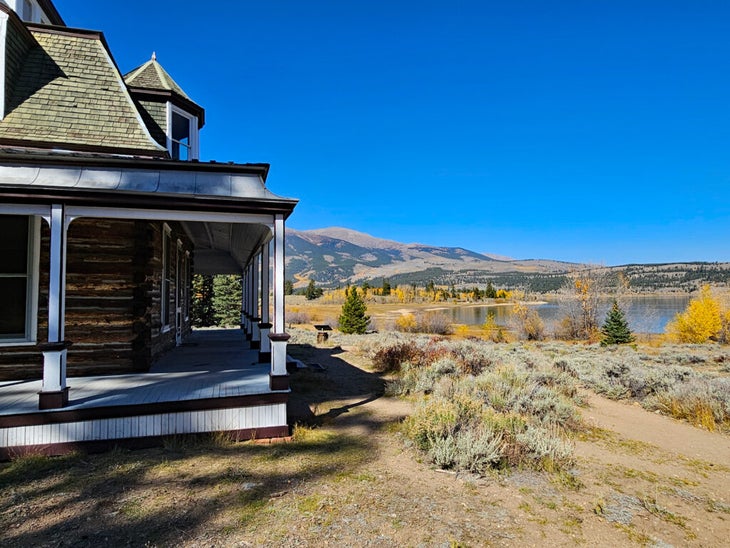
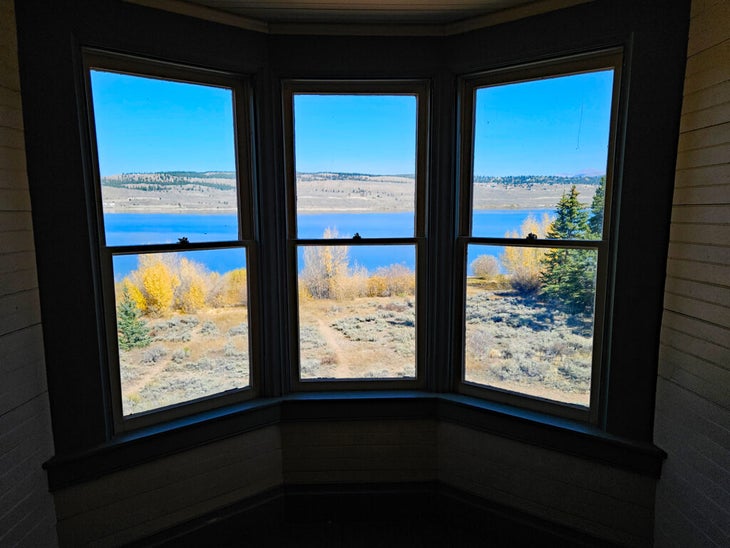
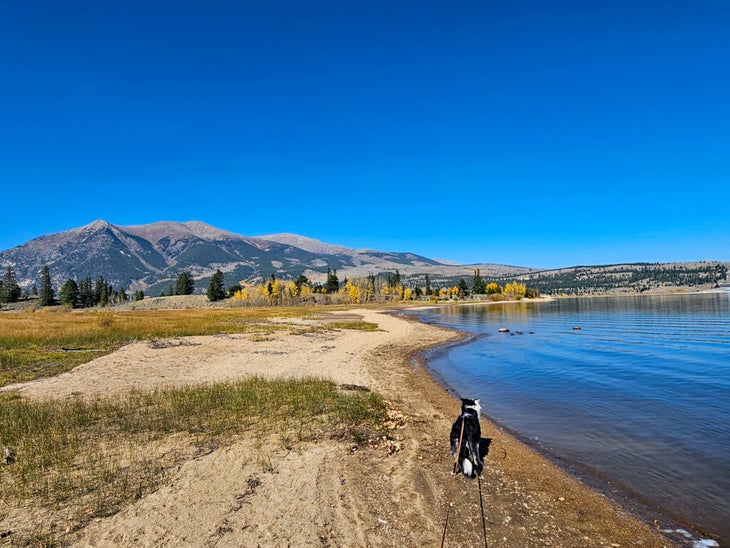
I could easily see the appeal of such a stunning location, especially in early October when shimmering waves of hyper-yellow aspen leaves contrast with the inky waters of Twin Lakes, set in a valley below Colorado’s tallest mountains. The buildings are surprisingly well-preserved. The place looks as if it could open for business next spring.
Leadville Past and Present

I didn’t forget about our pal Horace Tabor. When Tabor was (briefly) at the top of the world, he built the Tabor Opera House, which is still in operation with guided and private tours and events. Tabor, a businessperson and industry titan who came here from Vermont, went from rags to riches and then back to rags, dying of appendicitis in 1899 in Denver, where he worked as postmaster. His wife and widow, Baby Doe Tabor, was equally famous, having lured Horace Tabor away from his first wife with her reportedly unmatched beauty. Baby Doe’s story ended 35 years later, when she froze to death, alone and destitute, in a cabin near the Matchless Mine, in her early 80s.
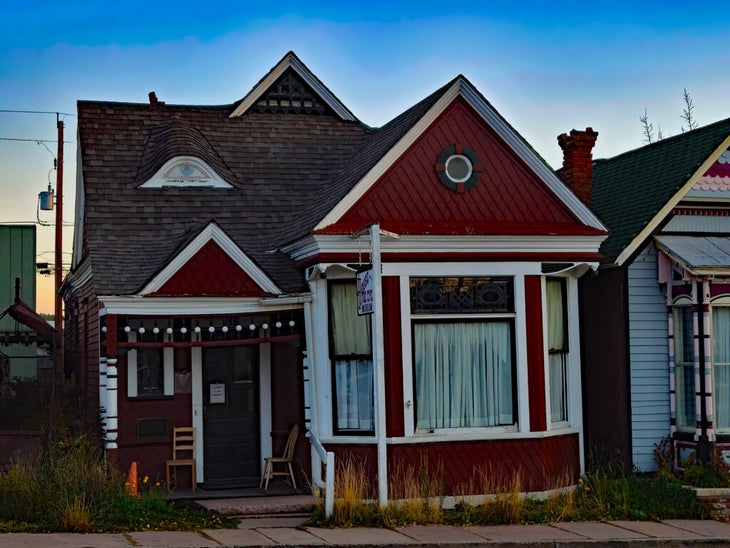
The list of famous people who visited Leadville reads like a who’s who from the 1800s. Mark Twain, Doc Holliday, the “Unsinkable” Molly Brown (who survived the Titanic disaster of 1912), Buffalo Bill, Bat Masterson (a Wild West lawman), Ulysses S. Grant, and Susan B. Anthony all set foot in the city. Leadville still fondly remembers its visit from Oscar Wilde in 1882. In a lecture at the Tabor Opera House, Wilde remarked upon a sign he allegedly saw in the Leadville saloon, “Don’t shoot the piano player; he is doing his best.”
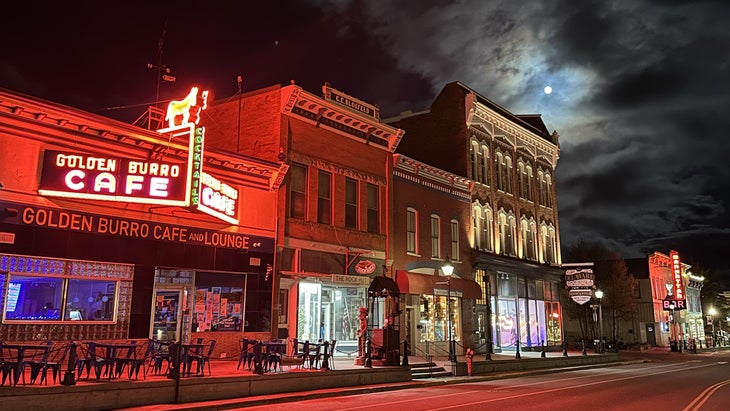
For a small place, Leadville has a good selection of dining options. I like to pair a visit to my favorite pizza place, High Mountain Pies (featuring a dog-friendly yard), with a stop next door at the kitschy House with the Eye Museum, a humble museum showcasing the furnishings of homes from the 1880s-1930s. The Golden Burro Cafe and Lounge and the Silver Dollar Saloon are solid American dining options in historic, old-timey settings—the food is good, and don’t worry, both establishments are family-friendly.
Leadville, Where the Ghosts Are Young
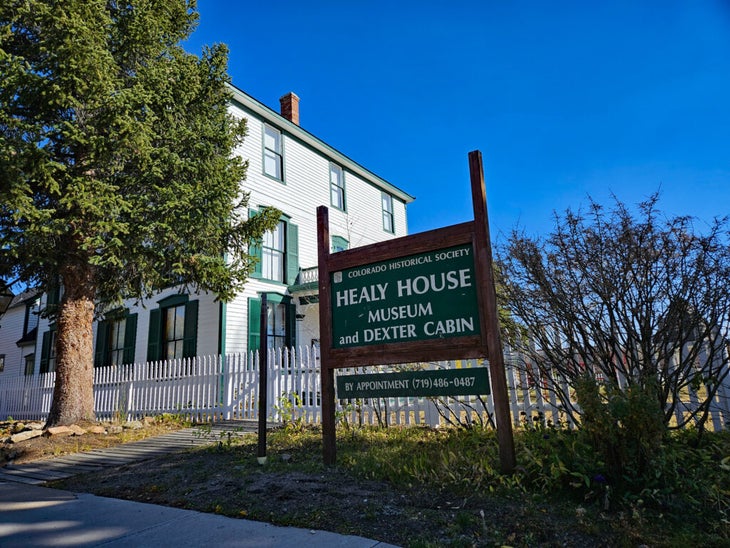
Historians place April 26, 1860, the day Abe Lee discovered placer gold a mile from town in the surrounding California Gulch, as the day that started the Colorado gold rush and gave rise to the human drama that would unfold, tangled in ambition, greed, luck, and misfortune. Leadville’s 2020 census showed a population of 2,633, far smaller than the boomtown days when the town was second in size only to Denver.
Leadville today may have fewer people, but the spirit of the place is far from diminished. Pivoting to outdoor recreation has created a new kind of boom that balances the region’s natural beauty with the authentic grittiness that put Leadville on the map.
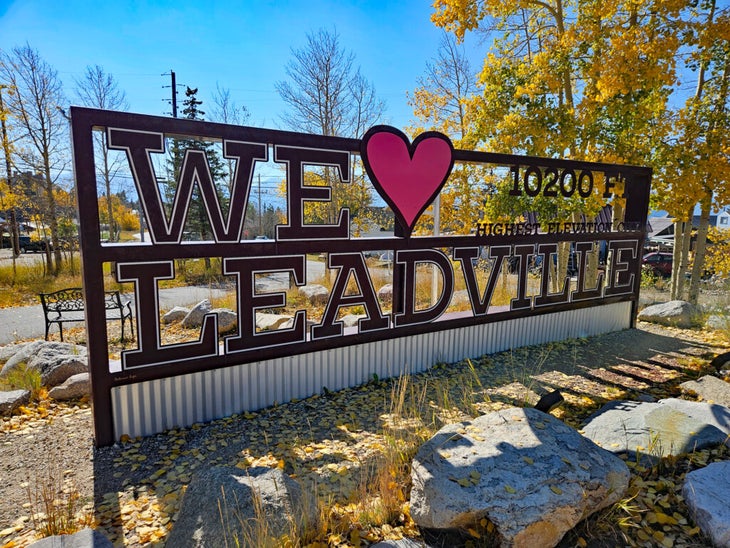
The city has settled into a good place, trading its pick axes for hiking poles. Leadville’s sharp edges have been smoothed down like the towering mountains surrounding it. Summer days in the high mountains cede to relaxing evenings on the casual confines of Main Street. Take your dogs for stand-up paddleboarding on Turquoise Lake or a run on the Mineral Belt Trail. As I discovered on my most recent visit, Leadville always has more to uncover.
About the Author
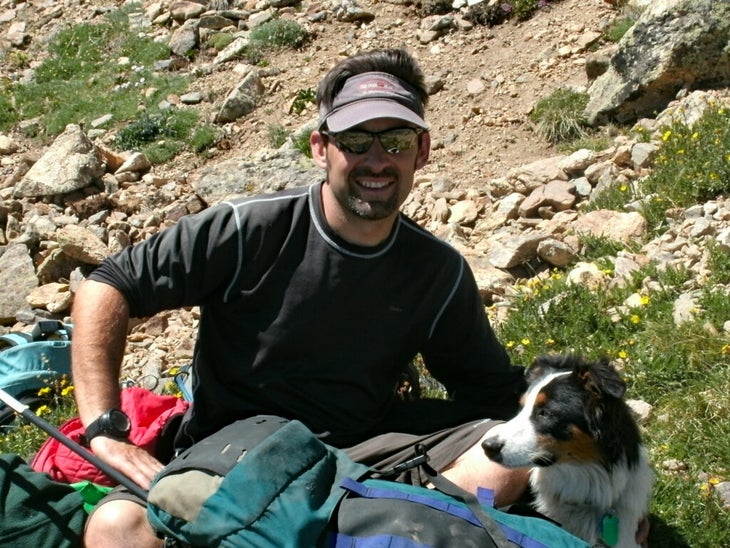
James Dziezynski is the author of six Colorado mountain hiking guidebooks and the SEO Director at Outside. The Leadville area is one of his favorite hiking destinations in Colorado—and may very well be his top-ranked dog-hiking playground. James has also written about “The 10 Best Summit Hikes in Colorado” and, near his home, “The Best Hikes in Boulder, Colorado,” as well as another gritty and gorgeous place: “This Colorado Town Is Off the Beaten Path and Full of Adventure.”
Looking for more great travel intel? Sign up for Outside’s Destinations newsletter.
Source link

